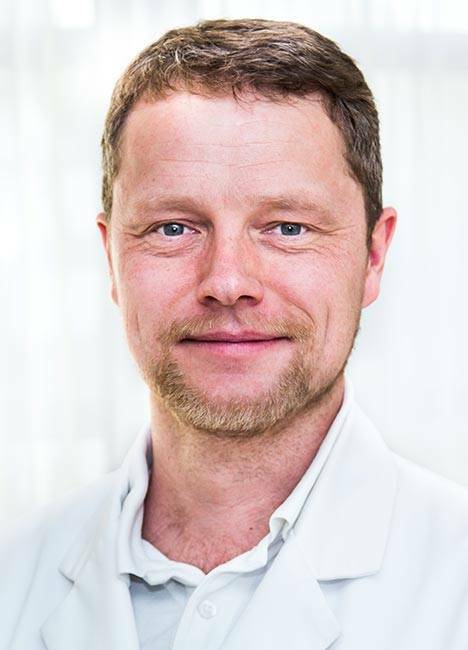Surgical Procedure for Knee Cartilage Transplant - Harvesting, Cell Culture & Implantation
First Step of cartilage transplant - harvesting a tiny grain of your cartilage
 The tiny grain of cartilage grows into a mass of new cartilage cells in the laboratory. © joint-surgeon.com
The tiny grain of cartilage grows into a mass of new cartilage cells in the laboratory. © joint-surgeon.com
The patient is booked in for a two-night stay at the clinic. A thorough clinical investigation is performed with ultrasound, x-rays and Arthroscopy (minimally invasive surgical technique performed under local anaesthetic) to check once more that cartilage transplant is the most suitable procedure. During the arthroscopy, if cartilage transplantation is a viable solution, healthy cartilage cells (also known as chondrocytes) the size of a grain of rice will be removed from a healthy, non-weight bearing section of the knee joint. Only two small incisions of about 1cm each are made. In addition to cartilage removal, a small quantity of blood (approx. 150ml) is taken to provide a natural serum for the cartilage cells to grow outside the body. On the second day following the operation, the patient can go home with full weight-bearing capacity.
Cell Culture - growing new cartilage in the laboratory
The next step takes place under sterile conditions within a highly specialised laboratory. The cells are separated from the cartilage. These cells are then multiplied using a cell-culture technique. The proliferation of cartilage cells can take place much faster outside the body. Inside the body, the natural regeneration of cartilage is inhibited by poor conditions, as no blood vessels reach the surface of the joints to nourish them. Approximately 12 million cartilage cells are present in the 0.4ml medium that is ultimately implanted into the defective joint. The new mass of cartilage cells is stored in a frozen state and is thawed and transported to the operating room on the day of the implantation. The interval period between the first and second appointments is usually six to eight weeks.
This laboratory-grown cartilage does not yet have the consistency and stability of natural cartilage. It is softer and does not yet provide smooth surfaces with the superb anti-friction features of natural cartilage.
Second Surgical Appointment - Cartilage Implantation is performed by arthroscopic procedure
This appointment is for a second minimally invasive arthroscopic knee procedure which has been introduced and perfected by the founder of the Gelenk-Klinik. First, the damaged cartilage is cleaned out, and then newly grown cartilage cells are inserted as three-dimensional spheres of cartilage and spread over the damaged area of the cartilage surfaces in the joint. Here they grow into the existing healthy cartilage. The cartilage transplant provides a plug to repair the joint. The new healthy cartilage provides all the protective functions that were missing in the injured joint. The joint surface is covered with elastic, smooth and viable cartilage, that can resist the challenges of sports and work. As the implanted cartilage matches the properties of the natural cartilage there is no risk of rejection from the surrounding cartilage tissues.
Healing - the regenerated cartilage becomes strong and durable within 3 months
 Same patient. The clearly visible damage to the cartilage surface of a knee joint is covered by the regenerated cartilage graft. The graft is applied as small cartilage globuli. Once in contact with the Joint surface, they will harden and form a smooth surface. After three months they will become part of the natural surface of the knee joint. © joint-surgeon.com
Same patient. The clearly visible damage to the cartilage surface of a knee joint is covered by the regenerated cartilage graft. The graft is applied as small cartilage globuli. Once in contact with the Joint surface, they will harden and form a smooth surface. After three months they will become part of the natural surface of the knee joint. © joint-surgeon.com
The cartilage transplant grows into the joint and starts to fit into its natural environment, becoming as tough and smooth as the neighbouring cartilage tissue. 48 hours after the Implantation patients can leave the hospital. However, the joint must not bear any weight for another six weeks, until the cartilage transplant had a chance to mature. Three months after the transplant the joint can bear full weight. After only one year following the transplant, the cartilage graft is no longer distinguishable from the cartilage tissue.



 Prof. Dr. med. Sven Ostermeier, Consultant for Orthopaedic Knee Surgery
Prof. Dr. med. Sven Ostermeier, Consultant for Orthopaedic Knee Surgery

